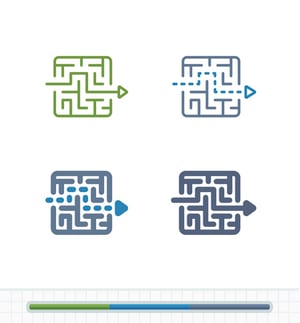
In discussions with clients, I make it a point to stress the primary purpose of the Enterprise Investment Schemes which is to promote the growth and development of UK business and innovation. SEIS/EIS finance is "patient capital" as investors do not seek to realise a return quickly. When an investment is made, there is no expectation of imminent exit, and thus the primary reason for making the placement is not to strike a tremendous sales price; instead, it is to see whether the company can set up and start profitable trading. The SEIS/EIS rules as set out in the Income Tax Act specifically state that pre-arranged exits are not allowed. It is no wonder that business angels are big adopters of the schemes, as they provide valuable mentorship in addition to financing to companies in their development phase.
In light of the above, I do not mean that SEIS/EIS investors aren't looking for scalable companies with the potential to be "unicorns". Nor do I mean that SEIS/EIS companies are required to continue trading in perpetuity in the structure that they start in. Early stage / start-up companies that successfully establish sustainable trading usually exit from their SEIS/EIS investment, but it is not necessary that they do.
Exit as a company valuation tool for SEIS/EIS investment
Although an exit is not the primary driver in raising SEIS/EIS investment, thinking about exit early on is needed to value the investment. Entrepreneurs must make an exit assumption on paper (even better on Microsoft Excel) as most valuation methods rely on an exit assumption, whether it is a price multiple applied to EBITDA on year five financial projections or another method (such as comparable analysis) to decide how much investment is required and the equity stake hold this represents.
How SEIS / EIS investment exits
SEIS/EIS shares must be held for a minimum three year holding period from the SEIS/EIS share issue date before there is a company exit and investors can fully realise the returns of their investment.
The exit strategies for SEIS / EIS companies are pretty much the standard exit strategies that you see for any type of private company, and are summarised below:
- Sale - a company can exit via a trade sale of the shares or assets. Although the sale can be either to a strategic or financial buyer, it is typically a strategic acquisition by a more established competitor or conglomerate.
- Management Buy-Out - management buy out is acceptable, as long as it is not pre-agreed or promised to SEIS/EIS investors at the time of placement.
- Listing - a company can sell its shares on SEIS/EIS recognised exchanges following an Initial Public Offering. It is prudent to check with HMRC prior to commencing the listing process, as rules can vary between exchanges. Initial Public Offerings are complicated and arduous processes, so most companies appoint lead advisors to assist. As SEIS/EIS rules are particular, the company's management needs to remain very much involved in the IPO process to ensure that the listing is correctly done in accordance with SEIS/EIS rules.
- Sale of shares to other shareholders or through a buy-back by the investee company - again, this should not be pre-planned (ensure there are no ratchet type clauses in the shareholders agreement), but rather may evolve naturally from the development and requirements of the company.
- Liquidation - should a company go bust, then a settlement whereby the assets are sold off, and debts are paid down from the proceeds, is allowable. In a liquidation, there will be no gains realised by SEIS/EIS investors, but they can still claim loss relief and won't need to repay any tax incentives already realised.
Remember the point I made earlier, that the schemes do not allow for any pre-arranged exits.
What happens if SEIS/EIS companies exit before the qualifying holding period expires?
On rare occasions, some startups grow quicker than they originally anticipated, or their offering is so disruptive that they are presented with an astonishing exit opportunity before the SEIS/ EIS three year holding period expires. Entrepreneurs must be aware that if the company exits before this period, the company violates SEIS / EIS rules. Any tax reliefs already received by investors will need to be returned, and there may even be a penalty imposed on the violation of the three-year holding period.
The cost-benefit analysis of breaking the rules must be considered carefully, and I believe that management should think of themselves as having a "fiduciary duty" at least to their SEIS/EIS shareholders. After all, these investors took a gamble (a big one) when investing in the company's early stages, when financial institutions and others would not even entertain the thought. Remember that SEIS/EIS investment is #capital at risk.
The spirit of EIS is support for company growth and development. Considering an exit is not contradictory to this. However, it is not the primary driver for SEIS/ EIS investment, and should not be portrayed as a primary reason to invest. The exit channels are pretty much the same as for any private company working through the stages of the financing life cycle. However, there are a few special rules that companies with SEIS/EIS investment should keep in mind during the exit process to ensure that they act in accordance with SEIS/EIS rules.
The first round of finance is the riskiest and hardest to raise and therefore early investors are special people and should be treated with respect. Management should have a good understanding of the SEIS/EIS rules to ensure that they do not impede on the tax incentives because they are essential to the initial investors who help the company start. 


